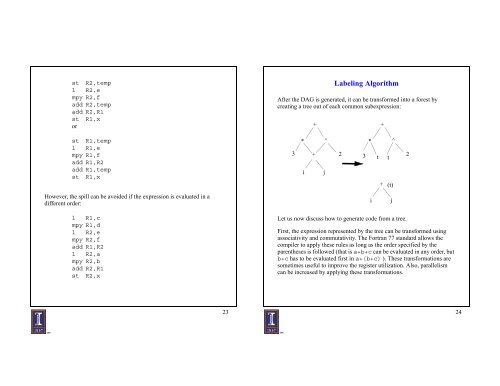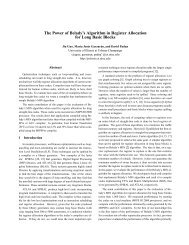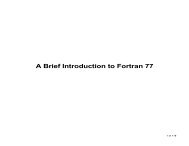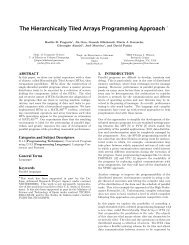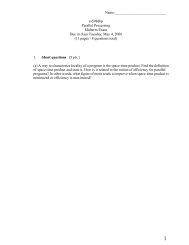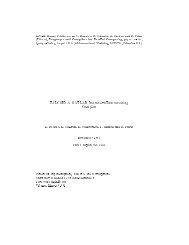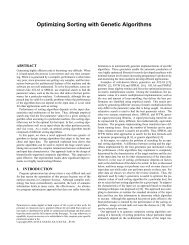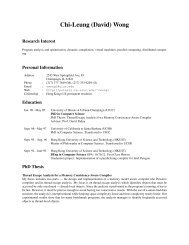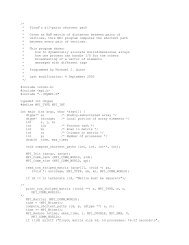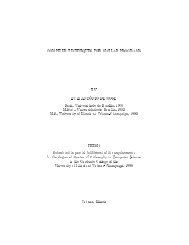Abstract Syntax Trees The Abstract Syntax Tree (AST) - Polaris
Abstract Syntax Trees The Abstract Syntax Tree (AST) - Polaris
Abstract Syntax Trees The Abstract Syntax Tree (AST) - Polaris
Create successful ePaper yourself
Turn your PDF publications into a flip-book with our unique Google optimized e-Paper software.
st R2,temp<br />
l R2,e<br />
mpy R2,f<br />
add R2,temp<br />
add R2,R1<br />
st R1,x<br />
or<br />
Labeling Algorithm<br />
After the DAG is generated, it can be transformed into a forest by<br />
creating a tree out of each common subexpression:<br />
+<br />
+<br />
st<br />
l<br />
mpy R1,f<br />
add R1,R2<br />
R1,temp<br />
R1,e<br />
add R1,temp<br />
st R1,x<br />
* ^<br />
3 + 2<br />
i j<br />
3<br />
* ^<br />
t t<br />
+ (t)<br />
2<br />
However, the spill can be avoided if the expression is evaluated in a<br />
different order:<br />
i<br />
j<br />
l R1,c<br />
mpy R1,d<br />
l R2,e<br />
mpy R2,f<br />
add R1,R2<br />
l R2,a<br />
mpy R2,b<br />
add R2,R1<br />
st R2,x<br />
Let us now discuss how to generate code from a tree.<br />
First, the expression represented by the tree can be transformed using<br />
associativity and commutativity. <strong>The</strong> Fortran 77 standard allows the<br />
compiler to apply these rules as long as the order specified by the<br />
parentheses is followed (that is a+b+c can be evaluated in any order, but<br />
b+c has to be evaluated first in a+(b+c) ). <strong>The</strong>se transformations are<br />
sometimes useful to improve the register utilization. Also, parallelism<br />
can be increased by applying these transformations.<br />
23<br />
24


